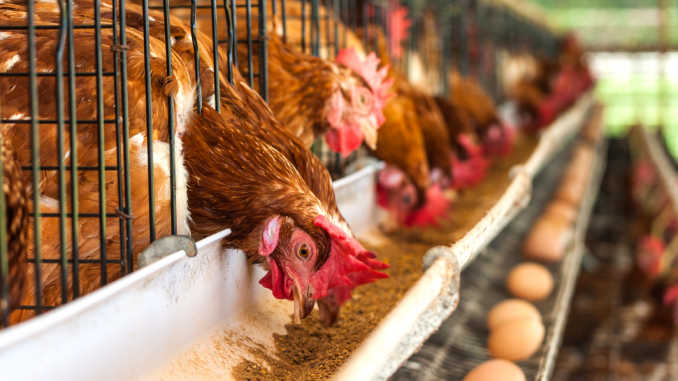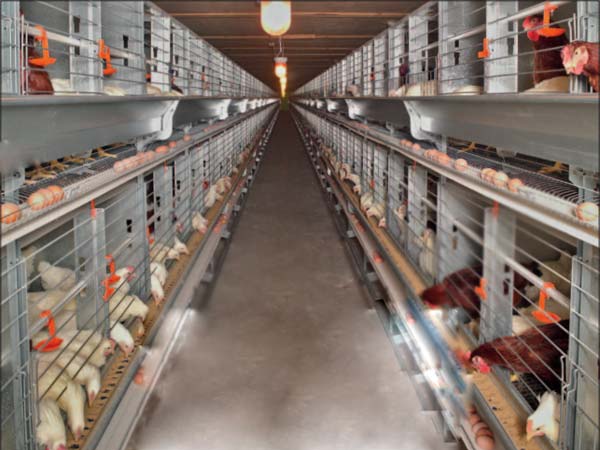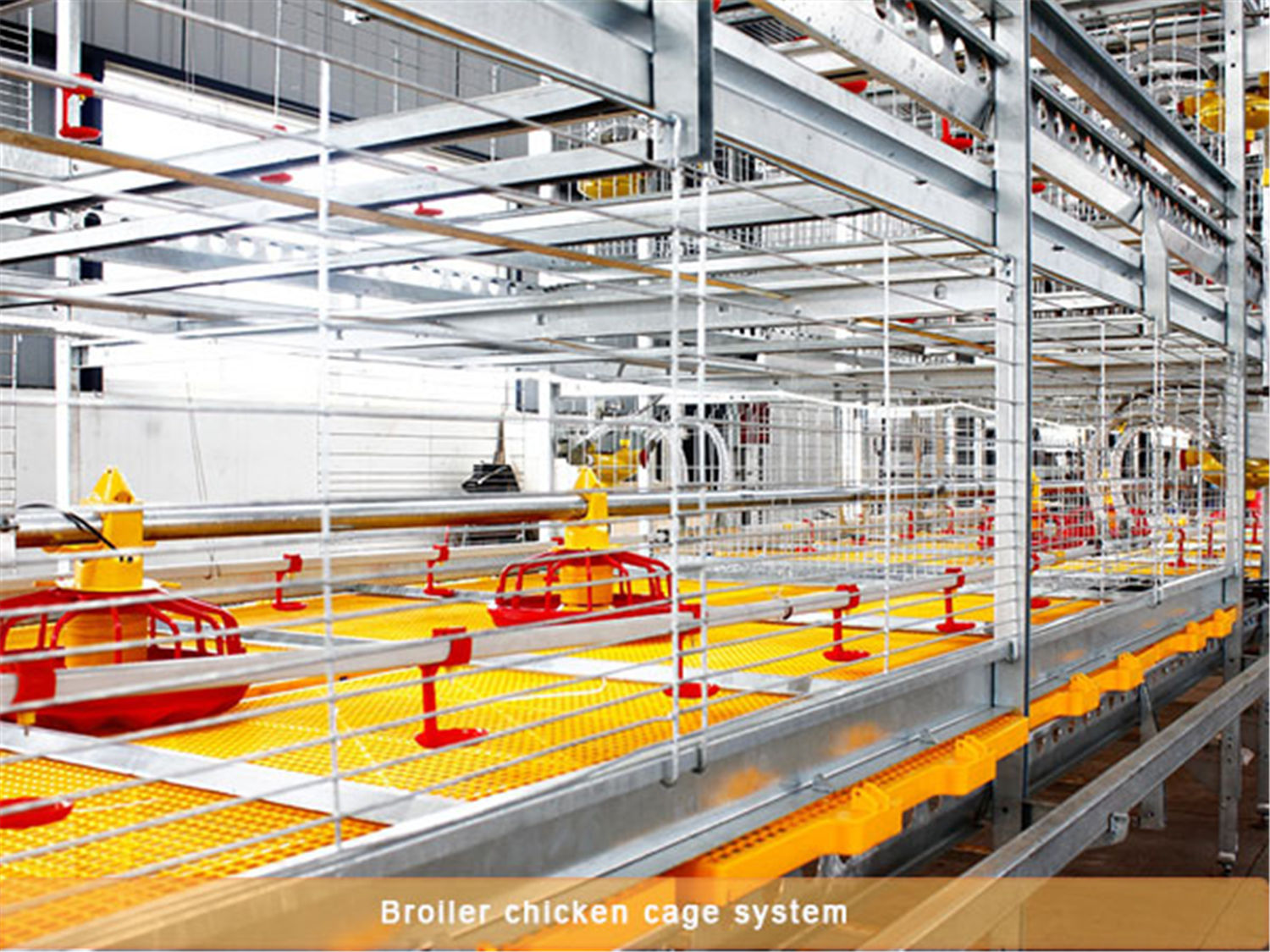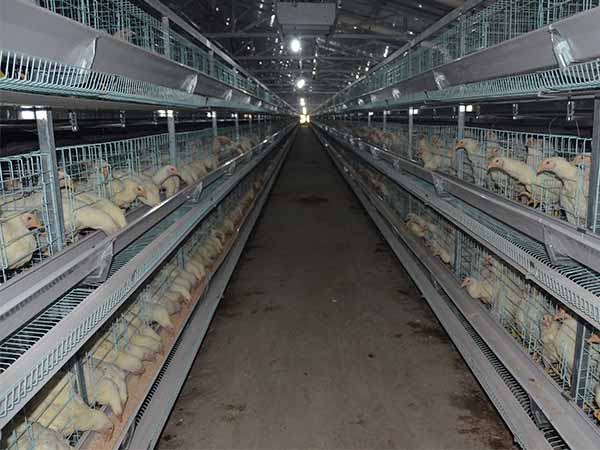Characteristics of laying hens for laying hens
With the continuous development of the aquaculture industry, the current farms use fully automatic poultry farming equipment to raise chickens, such as chicken cages, septic equipment, feeding equipment, etc. Chicken manure is produced every day, so the chicken house is clear. The manure should be treated in time, and the use of laying hen equipment to raise chickens not only does not require manual decontamination, but also does not require manual feeding. The manure in the house is cleaned and there is a manure machine, and the laying hen is fed with a feeding machine. Here are some of the features of the feeding machine for laying hens.

Layer equipment loading machine features:
1. The traveling power system of the feeding machine is driven by the advanced cycloidal pinwheel reducer motor. There is no damage during the driving process, the probability of failure is low, and its service life is relatively long, and the operation is relatively stable, and the noise is relatively low. small.
2. The walking system of the feeding machine is driven by chain and sprocket, which has better anti-vibration effect and corrosion resistance. The guide rails are laid with square steel, which is relatively stable in walking and increases the contact area, which can prevent slippage and save energy.
3. The frame of the feeding machine is made of steel and welded. The structure is reasonable, the bearing capacity is large, and deformation is not easy.
4. Its distribution system uses Zhengtai Electric, which uses limit switches. It can automatically stop when the end of walking. Manufacturers can also design various electrical control systems according to different needs of users.
5. The feeding system of the feeding machine adopts the core technology design and is equipped with a refiner to ensure uniform feeding.
6. The lifting system adopts flat conveyor and vertical conveyor. The farmers can control the feeding through the control system switch, thus ensuring the accuracy of cutting, and also saving the farmers and improving work efficiency.
The above is about the characteristics of the feeding machine in the laying equipment for the farmers. When feeding with the Chicken Breeding Equipment, the first thing to do is to choose the chicken feed, hoping to help the farmers.
Feeding and Management of Laying Hens in Summer in Breeding Equipment
The optimal environmental temperature for laying hens is 15℃ ~ 25℃, and the production performance is the best in this temperature range. However, since the beginning of summer, due to heat stress, mosquito bites and other factors, the feed intake has decreased, which has a great impact on the egg laying rate. Therefore, when raising laying hens in summer, in order to ensure high and stable production of laying hens, the following is the key.
The first is to reduce the temperature of the chicken battery cages . The temperature at noon in summer is relatively high, especially when the chicken is in the coop, the activity intensity is relatively small. When the temperature exceeds 32℃, the chicken flock is easy to suffer heatstroke. Therefore, effective prevention and control measures should be taken in time. First, ventilation and cooling work should be done to prevent the occurrence of heat stress in the chicken. Ventilate and cool down. Open windows and doors as much as possible to speed up the air circulation in the chicken coop. If necessary, install ventilation fans on the top or doors and windows of the chicken coop to increase the air convection between the chicken coop and the outside world and reduce the temperature of the chicken coop. However, it is necessary to avoid direct sunlight from windows, doors and ventilation holes to the chickens. It is better to plant trees and green around the chicken coops to ensure the freshness and freshness of the air.
Sprinkle cold water on the top of the hen house every hot noon to reduce the temperature of the hen house. Under the condition of poor natural ventilation, water spray is used to cool the chicken body and the chicken coop directly at noon and afternoon every day, and water spray is used to absorb the heat of the chicken coop. The water curtain can be made at the door and window of the chicken coop when conditions permit, and air can enter the chicken coop through the water curtain to lower the temperature inside the chicken coop by 5℃ ~ 6℃.

Due to the high temperature in summer, the intake of chickens decreases. In order to maintain high and stable production of laying hens, the concentration of feed must be changed to meet the normal physiological needs of laying hens and the nutritional needs of production. During the high temperature season of energy feed, the feed intake of laying hens is lower than usual. Therefore, the consumption of grain energy feed should be adjusted and 0.5% ~ 1.5% oil should be added appropriately to improve the energy intake and utilization rate. Increasing the hot summer days of protein feed will reduce the feed intake of chickens. Only by increasing the protein level in the feed and ensuring the amino acid balance can the demand for protein in the breeding equipment be met, and the egg laying rate will not be affected due to insufficient protein caused by reduced feed intake.
Due to the high temperature in summer, chickens drink a lot of water, resulting in thin feces, which ferment quickly in the chicken house, producing a large amount of heat and toxic gases such as hydrogen sulfide and ammonia. In addition, the abundance of mosquitoes and flies can also bite chickens and spread epidemics. Therefore, it is also very important to do a good job in environmental sanitation and poultry farming cage equipment. Clean the water line of chicken coop regularly.
Any breeding factory is of vital importance to the prevention and control of epidemic diseases in any season. Only by controlling the occurrence of epidemic diseases and ensuring the health of chickens can the high and stable yield of chickens be guaranteed. In summer, the temperature is high and the chicken is weak. Therefore, adjusting the chicken's constitution to the best health state before the high temperature season is the prerequisite for safe and stable hot summer.
Broiler Breeding Technology in Chicken Farm
More and more farmers are beginning to develop the breeding industry. Large-scale breeding of chickens requires the use of Poultry Rearing Equipment, such as broiler cages, dung removal equipment and feeding equipment. However, in addition to these breeding equipment, if you want to raise chickens well and bring economic benefits to yourself, you still need certain breeding technology. The following are the key points of broiler breeding technology.
First of all, large-scale farming requires a farm. We need to know where is the best place for chicken farm construction. The selection of chicken farm site is directly related to the epidemic prevention status and economic benefits of chicken farms. According to the size of the breeding scale and the resource conditions, it is necessary to have a clear view of the convenient transportation of the chicken coop, sufficient water resources and guarantee the power supply. Electricity is required for lighting, water supply, temperature supply, ventilation, etc. in the chicken farm, so the chicken farm requires sufficient power supply. Environmental conditions are good and there is room for development.

Chicken coops are places where chickens live healthily. When building chicken coops, attention should be paid to the performance of heat preservation, heat insulation, ventilation and lighting, moisture prevention, ease of production and operation, disinfection and epidemic prevention, etc. At present, there are many types of buildings in chicken coops, which can be divided into two categories: open type and closed type according to different building structures and performances. Closed henhouse is also called windowless henhouse, because it is relatively closed to the outside world, has the function of temperature isolation and shading, and can adjust and control the internal environment of the henhouse. It has greater advantages than open henhouse, but it has high cost and large infrastructure investment.
Broilers for meat are more suitable for high-density feeding, and the feeding amount depends on the effective feeding area of the chicken house and the appropriate feeding density in battery cage for chickens. However, in actual production, the amount of breeding is restricted by many factors. The first is the number of breeders, the second is the feed supply capacity and the source of chickens, and the third is the area of chicken houses. Under the condition that there is no problem with the first two, the feeding amount depends on the area of the chicken coop.
There are two types of ventilation in chicken coops: mechanical ventilation and natural ventilation. There are mainly two types of mechanical ventilation in closed chicken coops, namely, horizontal ventilation and vertical ventilation. These are the key points of raising chickens in the poultry house, hoping to help farmers build a suitable chicken farm.
Careful management of broiler chicken breeding in chicken houses
Farmers can raise chickens according to their own conditions. Whether they are broiler chickens or laying hens, they need suitable layer battery cage for feeding. If you choose to breed broiler chickens, the environmental management of broilers will become more important, whether it is Equipment for raising chickens, or closed-type chickens have higher environmental requirements. Doing environmental management can better breed broiler chickens. How should broiler culture be managed?
1. Temperature management of the house: The temperature inside the house will affect the growth speed of the broiler and whether it is strong. Therefore, it is the key for the farmers to control the temperature. Generally, in the case of broiler chickens, the farmers should raise the temperature of the house. In the first 2 weeks, the temperature is preferably 32-35 ° C. The temperature change and the body temperature can not be too different. If it exceeds 8 ° C, it is easy to cause death. Chick body during this periodWeak quality, less feathers, can not rely on its own constant body temperature, must rely on manual control of the ambient temperature. After 2 weeks of age, it is appropriate to reduce the temperature by 3 °C per week. The cooling rate is too fast, the broiler does not adapt, and too slow is not good for feather growth. From 5 weeks of age, maintaining an ambient temperature of 20-25 °C is most beneficial for weight gain and feed remuneration. Broilers pay great attention to temperature control throughout the feeding period.
2. Ventilation management of chicken houses: Ventilation of closed chicken houses is generally carried out using broiler culture equipment fans. The growth rate of broilers is very fast, and the number of broilers is high. The carbon dioxide and the ammonia of the manure are many, which easily affects the health of the flocks. The household must adjust the ventilation volume in the house according to the temperature and the growth of the broiler, and remove the harmful gas from the house to allow fresh air to enter the house.

3, chicken house lighting management: the light of the closed house is all light, the purpose of the light work is to extend the feeding time, promote growth speed, light time is generally 23 hours a day, 1 hour dark. Generally, after the second week, the evening intermittent lighting is implemented, that is, the light is fed, and the light is turned off after the feeding. However, be careful to have enough feeding time each time, otherwise it will affect the feed intake and cause uneven growth. The light intensity is slightly stronger in the first three days. It is suitable for 10 lux, so that the young chicks are familiar with the environment, easy to eat and drink, and then reduce the light intensity to the minimum intensity, 2.5-5 lux. Low light can reduce the occurrence of chicken sputum, and the chickens are safe and fattening.
4, the humidity management of the chicken house: Generally speaking, in the appropriate temperature range, the ideal relative humidity is 60-65%, and the farmers should pay attention to when the relative humidity in the house is less than 40%, the broiler will Feather growth is poor, and it can cause a large increase in dust in the air, which can easily lead to respiratory diseases.
The above is the meticulous management of battery cage for broilers to raise chickens. Only a comfortable and hygienic environment for broilers can better grow broilers and improve the efficiency of farmers.
The somatosensory temperature of the chicken is related to the temperature of the house.
The chicken houses of large-scale farmed chickens poultry farming cage are all about a suitable temperature, space, etc., so that the chickens raised are relatively healthy. Sometimes the ventilation is large, and the temperature of the chickens is rapidly decreasing, which is called cold cold, and ventilation. Small will also cause some trouble to the chicken. The ventilation is correct, the way of entering the wind is wrong, and the flock also produces the respiratory tract. The way is wrong, mainly caused by the wrong amount of air in the unit time.
In fact, the somatosensory temperature of the chicken is related to the temperature of the chicken house. First, the outdoor humidity is too low, and second, the outdoor temperature changes too much. Humidity is an influence indicator of the somatosensory temperature. The humidity does not increase or decrease by 1%, and the temperature of the body feels a temperature difference of 0.2.

The temperature of newborn chicks is between 39.4 °C and 41.1 °C, and the body weight is about 32-42 g. The body surface area is larger than that of body weight. The hair is relatively small, the heat preservation capacity is poor, the feed intake is small, and the energy production capacity is also poor. . If the ambient temperature of the house is not properly controlled, for example, the ambient temperature is lower than the optimum temperature, it can be seen that the chicks eat more and the heat production increases, that is, the metabolic needs of the chicken increase, the feed conversion rate decreases, the oxygen demand increases, and even when severe Lead to the occurrence of disease. On the other hand, if the ambient temperature of the chicken house is higher than the optimum temperature, it can be seen that the chicks eat less material, drink more water, drain loose stools, have insufficient nutrient digestion, accelerate breathing, and have imbalanced metabolism in the body. As the chicks age, the chicks eat more, the body weight increases, the feather coverage increases, the feather insulation capacity and the energy production capacity in the body are continuously enhanced. After the chicks were 28 days old, the feathers began to grow, the body temperature regulation mechanism began to improve, and gradually began to adapt to the external environment.
It is important to note that the appropriate temperature range for broilers in Poultry Rearing Equipment is the effect of receptor weight, ventilation (wind speed), feed intake, relative humidity and ambient temperature. In particular, we must emphasize the temperature of the chicken's body temperature. The humidity in the house is different from the wind speed, and the temperature of the chicken is different. Therefore, the target temperature must be set according to the age (body weight), actual humidity and wind speed of the flock.
